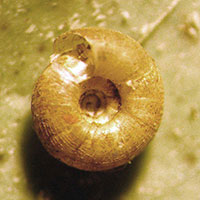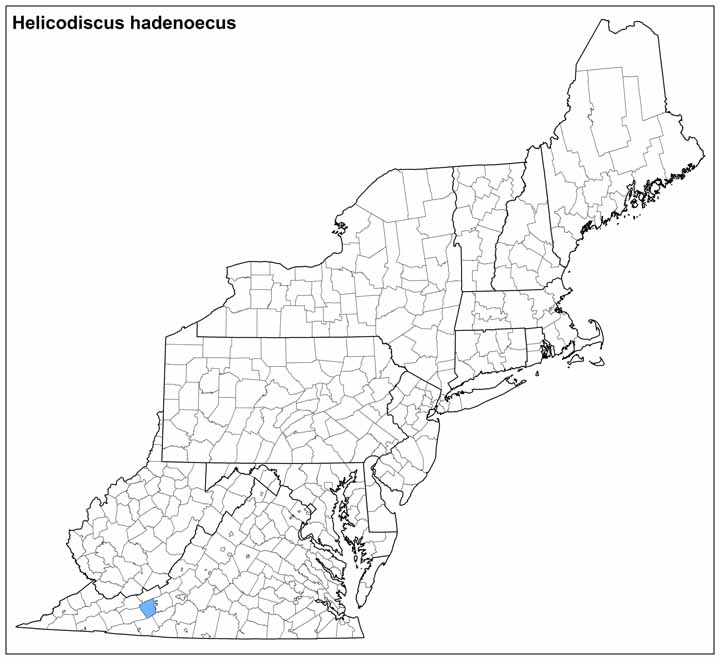Land Snails

Photo(s): An old shell of Helicodiscus hadenoecus found buried beneath the soil surface, typical for this possibly extirpated species in Virginia. Image © Ken Hotopp.
Click photo(s) to enlarge.
Helicodiscus hadenoecus (Hubricht, 1962) (sub-fossil only)
Family: Helicodiscidae
Common name: Cricket Coil
Identification
Width: 2-3 mm
Height: 1-1.5 mm
Whorls: 4
The flattened, opaque shell of Helicodiscus hadenoecus has deep sutures and a microsculpture of spiral fringes upon its periostracum (outer protein coating). The fringes appear on both the top and base of the shell, excluding the embryonic whorl. The umbilicus is open and deep, about one-third the diameter of the entire shell. This shell lacks denticles or “teeth” within the aperture.
Ecology
Helicodiscus hadenoecus was initially described as a cave species, where it appears to feed on the guano of cave crickets in lightless zones (Hubricht, 1962; Lewis, 2005). In Tennessee it has been found in leaf litter and around logs (Coney et al, 1982). In Virginia it is found in rich forest habitats at the foot of bluffs along the New River, where shells are usually buried in 10 cm of soil or deeper (Hotopp, pers. obs.).
Taxonomy
There are no synonyms for this species’ name.
Distribution
This snail is known from Virginia, Kentucky, Tennessee, and Alabama. It has only been found as a subfossil in Virginia, along the New River in Pulaski County, where shells may be found with old shells of the federally-listed snail Polygyriscus virginianus.
Conservation
NatureServe Global Rank: G3
NatureServe State Rank: Virgininia, SH, Historic
Helicodiscus hadenoecus is listed as possibly extirpated in Virginia, and is considered vulnerable in its other three states to the south. Snail surveys in southern Virginia caves may encounter extant colonies.
Ken Hotopp, Meegan Winslow 11/2012
Update KPH 4/2018



